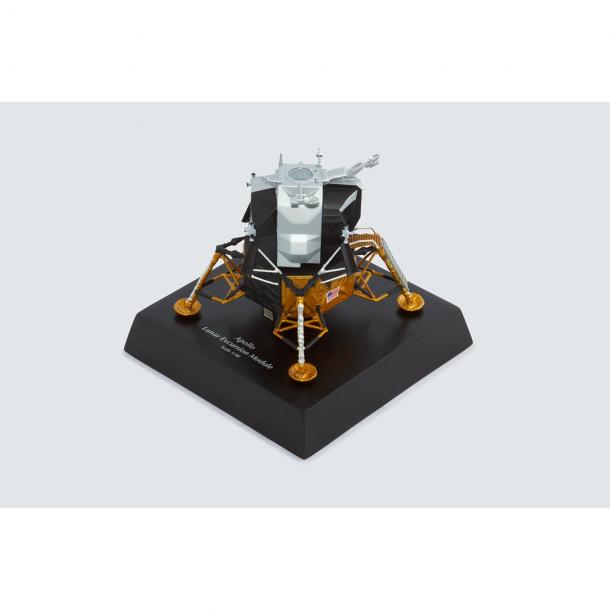LUNAR EXCURSION MODULE MODEL

The Lunar Excursion Module (LEM), also known as the Apollo Lunar Module, is the portion of the Apollo spacecraft that lands on the moon and returns to lunar orbit. The 6.65 m³ module was designed to carry a crew of two. It is 6.4 m high and 4.3 m across, and rests on four legs. During the Cold War, the United States and the Soviet Union were in an astronautical engineering race. President Kennedy made space exploration and lunar landing a top national priority.
The LEM came into being out of NASAs choice to reach the moon via a lunar orbit rendezvous (LOR) instead of a direct ascent or Earth orbit rendezvous (EOR). Both a direct ascent and an EOR would have required the entire Apollo spacecraft to land on the moon. Once the decision had been made to proceed using an LOR, it became necessary to produce a separate spacecraft capable of reaching the lunar surface. Out of the eleven firms invited, nine submitted proposals for the LEM. In September 1962, Grumman was awarded the contract.
As the program continued, there were numerous redesigns to save weight, improve safety, and fix problems. The LEM is divided into two major parts, the Descent Module and the Ascent Module. The Descent Module contains the landing gear, landing radar antenna, descent rocket engine, and fuel to land on the moon. It also carries the water tank and the majority of the battery power and oxygen. The Ascent Module contains the crew cabin, radar and communications antennas, instrument panels, and guidance and navigation systems.
The first LEM flight was on January 22, 1968 when the unmanned LM-1 was launched on a Saturn IB for testing of propulsion systems in orbit. On July 20, 1969, LM-5 Eagle, the LEM of the Apollo 11 mission, landed on the moon.

Отзывы ещё не добавлены